Publicly Invited Research
- Home >
- Publicly Invited Research
A01Basic technology for dynamics and control of neural circuit
Masaharu Kinoshita (Hirosaki University)

“Selective blockade of the neural pathway related to the visuomotor translation in non-human primates”
Optogenetics enables us to manipulate neural activities in millisecond order. This technique allows us to reveal not only correlation but also causality between a neural circuit and its function. The usability of the optogenetics has been demonstrated mainly in the small model animals such as mice.
Click here for detail
Masayuki Koganezawa (Tohoku University)

“Neural basis of the experiment-dependent behavioral shifts in courtship of Drosophila melanogaster“
Recent studies suggest that the sexually dimorphic behaviors, including courtship and aggression, are regulated by a sexually dimorphic neural circuitry. In Drosophila, fruitless (fru) gene plays a central role to establish the sexually dimorphic circuitry. fru encodes a putative transcription factor and its product is expressed only in a male CNS. The male-specific expression of Fru protein controls the sex differentiation of neurons via regulation of target genes.
Click here for detail
Yuchio Yanagawa (Gunma University)

“Establishment of an inhibitory neuron-specific gene expression system using genetically engineered mice together with viral vectors”
Inhibitory neurons are composed of GABAergic and glycinergic neurons. Glutamate decarboxylase 67 (GAD67) and Glycine transporter 2 (GlyT2) are specifically expressed in GABAergic and glycinergic neurons, respectively. Vesicular GABA transporter (VGAT) is present in both GABAergic and glycinergic neurons.
Click here for detail
Takuya Sasaki (The University of Tokyo)

“Sequential reactivation of hippocampal place cells for behavioral adaptation”
Hippocampal pyramidal cells show place-selective firing, termed as “place cells” (this finding was awarded with the Nobel Prize in 2014). These cells occasionally exhibit a transient synchronous burst firing when the animal is outside the place field, which is represented as a large negative local filed potential (sharp wave ripple).
Click here for detail
Takeshi Sakurai (University of Tsukuba)

“Functions of hypothalamic neurons in regulation of arousal and vigilance states in response to environmental challenges”
We are trying to understand how hypothalamic neurons alter animals’ behavior, wakefulness and bodily functions to adopt environmental challenges.
Click here for detail
Fumitaka Osakada (Nagoya University)

“Layer-specific roles of feedback cortico-cortical connections”
The processing of visual information is initiated in rod and cone photoreceptors when photoreceptors capture photons, convert them into electrical signals, and stimulate multiple neural circuits in the retina.
Click here for detail
Hiroyuki Hioki (Kyoto University)

“Development of basic technology for visualization and observation of brain neural circuitry”
Elucidating neuronal circuits is one of the fundamental issues for understanding how the brain works and implements higher-order functions. For the analysis of three-dimensional structures of neurons, a traditional method has been so far adopted: 1) preparation of thin sections (30–40 µm),
Click here for detail
Ken-ichi Inoue (Kyoto University)

“Development of viral vector systems for pathway-specific neuronal visualization and manipulation”
To know about a variety of higher brain functions systematically, it is essential to elucidate the architecture of complex and elaborate neural networks. For clarifying the functional role of a given pathway, it is effective to explore behavioral and physiological changes by modifying neuronal activity through the target pathway.
Click here for detail
Tatsumi Hirata (National Institute of Genetics)

Adaptive Circuit Shift in the Central Olfactory System
For terminally differentiated neurons, the “birthdate” when they become post-mitotic has a special meaning; it can determine the neuronal fates and influence their connection patterns.
Click here for detail
A02Development of transition of neural circuit for behavioral adaptation
Hiromu Yawo (Tohoku University)
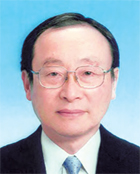
“Quantitative connectomics of the network reorganization during development”
During development of the central and peripheral nervous systems, the axons of presynaptic neurons innervate the target tissue to make connections with the postsynaptic cells. Initially, a presynaptic axon branch frequently to contact with many postsynaptic cells and a postsynaptic cell is innervated with many presynaptic axons.
Click here for detail
Kazuo Emoto (The University of Tokyo)
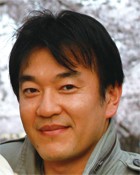
“Neural basis for odor preference choice in Drosophila larvae”
The behavior of animals is flexible and can change dramatically in response to the environment, nutritional state, or even age, among other factors. However, the neural basis of how external and internal cues modify innate behavior remains elusive.
Click here for detail
Toshiyuki Hirabayashi (National Institute of Radiological Sciences)

“Network mechanisms underlying flexible retrieval of object memory in primates”
The temporal cortex in primates serves as a storehouse of visual long-term memory, and microcircuit mechanisms underpinning the retrieval of visual object memory has been identified in the macaque temporal cortex. In contrast, “flexible” retrieval of object memory has been assumed to require the prefrontal cortex that exerts top-down regulation of the microcircuits in the temporal cortex for that function.
Click here for detail
Hiroshi Ichinose (Tokyo Institute of Technology)

“Role of monoaminergic input on the developmental alteration in the neural circuits of the basal ganglia”
We are studying on the regulatory mechanism of dopamine (DA) synthesis in the brain. As tyrosine hydroxylase (TH) is thought to be the rate-limiting enzyme for production of dopamine, the TH activity is tightly regulated through several mechanisms. Recently, we analyzed how the TH protein is chemically modified and subsequently degraded under deficiencies of DA and tetrahydrobiopterin (BH4), a cofactor for TH, in PC12D cells.
Click here for detail
Kazuo Kitamura (University of Yamanashi)
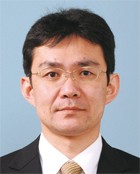
“Functional organization of cerebro-cerebellar loop in motor control and learning”
Acquisition and execution of skilled motor actions critically depend on the interplay between many brain areas, including cerebro-cerebellar communication loop. Despite decades of investigation, the mechanism of motor control and learning implemented by cerebro-cerebellar loop remain elusive.
Click here for detail
Nobuhiko Yamamoto (Osaka University)

“Regulatory mechanism of neuronal circuit shift by activity-dependent gene expression in the neocortex”
During development, fundamental neuronal circuits are formed by a genetically defined program, but the fine structure is established by environmental stimuli, stimulus-evoked neuronal activity such as action potentials and synaptic responses. Axon branching, which determines the circuit property, is affected strongly by the activity-dependent process.
Click here for detail
Ichiro Fujita (Osaka University)

“Adaptive recruitment of binocular correlation and matching computations to stereopsis”
The world where we are and the world we perceive are spatially 3-dimensional (3-D), or they have depth. We feel, in addition to understanding, that every object has a particular shape and thickness, occupies a volume, and is separated in depth from others in space.
Click here for detail
Yoshio Hata (Tottori University)
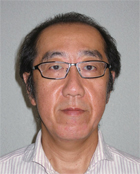
“Reorganization of visual neural circuitry during recovery from amblyopia”
Monocular deprivation during early postnatal life induces functional and anatomical changes in the visual system. In the primary visual cortex, most neurons lose their responses to the deprived eye and the deprived eye becomes amblyopic.
Click here for detail
Wen-Jie Song (Kumamoto University)

“Associative learning of the quality of two sensory modalities and its underlying mechanism”
Multisensory integration is important for cognitive functions. It has long been believed that multisenrory integration is the function of the association areas of the cortex. In recent years, evidence has been accumulating that primary sensory areas respond to multi-modal sensory stimulations, suggesting a possible role of early cortical sensory areas in multisensory integration.
Click here for detail
Takanori Uka (Juntendo University)

“Neural mechanisms for flexible decision making”
Task switching, the ability to rapidly switch behavior depending on context, is an adaptive cognitive function that is highly developed in primates. Our main goal is to understand the neural circuit that underlies such flexible decision making. We developed a tak switching paradigm where monkeys were trained to switch behavior depending on task rule.
Click here for detail
Koichi J. Homma (Teikyo University)

“Critical role of the novel neural circuit in the cerebrum in filial imprinting of newly hatched domestic chicks”
Filial imprinting in precocial birds is a useful model for studying early learning, as it is characterized by a well-defined sensitive or critical period. We recently showed that the thyroid hormone 3,5,3′-triiodothyronine (T3) determines the onset of the sensitive period.
Click here for detail
Akihiro Funamizu (Okinawa Institute of Science and Technology Graduate University)

“Dynamic circuit shift depending on behavioral strategies”
In uncertain environments, we often cannot get enough sensory inputs to know the current context. Therefore we must infer it by simulating how it changes by our own actions or external factors. One illustrative example of this mental simulation is a Mexican game piñata, in which a person tries to hit a piñata far away with eyes closed.
Click here for detail
Takuji Iwasato (National Institute of Genetics)

“Dynamics and mechanisms of neuronal circuit refinement in the somatosensory cortex of the neonatal mice”
Higher brain function in the mammals relies on their complex yet sophisticated neuronal circuits, which are developed in an activity-dependent manner during postnatal stages. However, the dynamics and mechanisms of neuronal circuit refinement in the developing brain are largely unknown.
Click here for detail
Masanori Matsuzaki (National Institute for Basic Biology)

“Motor cortical circuits to achieve context-dependent switch of movements”
Animals can execute different behaviors in the same context or the same behavior in different contexts. The brain determines what movement is executed in individual contexts. For this determination, inter-laminar and cortico-cortical communications are essential because information processing in the brain is performed in intra-areal circuits and through inter-areal interactions.
Click here for detail
Yasuo Kawaguchi (National Institute for Physiological Sciences)

“Distinct cortical subnetworks differentially route output from the frontal cortex”
A prominent feature of neocortical pyramidal cells is their diverse projections to various brain areas. Since individual cortical areas have different sets of extracortical targets, circuit organization is likely specialized in different cortical areas. However, the local synaptic connectivity of cortical neurons have been investigated mainly in the primary sensory areas.
Click here for detail
Yumiko Yoshimura (National Institutes of Natural Sciences)

“Neural circuit mechanisms underlying visual learning”
Sensory function may be modified depending on experience. We previously demonstrated that when rats were trained by the visual stimulation with a particular orientation, the acuity of the orientation was improved when measured behaviorally.
Click here for detail
A03Injury and recovery of neural circuit for behavioral adaptation
Mayu Takahashi (Tokyo Medical and Dental University)

“Pathway-specific destruction of synaptic transmission in the saccadic eye movement system and its resultant functional disorders”
The brain uses various types of eye movement subsystems to receive visual input properly; saccadic eye movement occurs when a stimulating target appears in front of us, smooth pursuit and convergence eye movements occur when looking at a slow moving visual target, and the vestibuloocular reflex (VOR) occurs when looking at a static visual target under head free environment.
Click here for detail
Akihiro Yamanaka (Nagoya University)

“The study to reveal mechanism of narcolepsy symptoms by the adoptive circuit shift after ablation of orexin neurons”
We use optogenetics or pharmacogenetics to control the activity of targeted neurons in vivo. Alternatively the fate of targeted neurons is controlled to reveal physiological role of these targeted neurons. We focused on instinctive behaviors such as feeding, drinking, sexual behavior and sleep/wakefulness regulation.
Click here for detail
Makoto Kinoshita (Nagoya University)
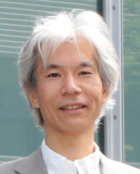
“Spatial discrimination impairment and adaptation in mice that genetically or postdevelopmentally lack a synaptic molecule from the entorhinal cortex-hippocampus circuit”
Recognition and discrimination of surrounding environments depends on the spatial pattern separation ― a neural process that requires the neural circuit between the entorhinal cortex and hippocampus, where the high-threshold glutamatergic synaptic inputs toward the granule cells of the dentate gyrus (DG) plays a critical role.
Click here for detail
Masahiko Takada (Kyoto University)

“Elucidating the mechanisms underlying the reorganization of compensatory neural circuits in a primate model of spinal cord injury”
Lesions of the corticospinal tract (CST) cause spinal cord injury (SCI) that is characterized by motor impairments involved in the spinal levels below the lesions. It has been considered that compensatory events due to plastic changes of CST neurons exert essential roles in recovery of motor functions after SCI.
Click here for detail
Toshihide Yamashita (Osaka University)

“The plasticity of the central voluntary movement circuit following the CNS injuries”
In this study, the objective is to clarify the mechanism controlling the plasticity of the central voluntary movement circuit. In studies until now, after central nervous system damage, we have clarified that the corticospinal tract to control the motor function forms a side branch at the level of the cervical spinal cord from axons
Click here for detail
Nobuaki Tamamaki (Kumamoto University)

“Adult neurogenesis in the mammalian neocortex”
Although adult neurogenesis is a common phenomenon in the non-mammalian neocortex, the scale of adult neurogenesis in the neocortex appears to decrease significantly as the phylogeny approaches the human being. In apparent contrast, the limbic area of the telencephalon appears to be a site of continuous generation of neurons.
Click here for detail
Hideki Hida (Nagoya City University)

“Effect of cortico-rubral tract on the recovery of forelimb function by forced-limb use after intracerebral hemorrhage”
Intensive rehabilitation after stroke has a big influence on the reorganization of the neural circuit and is an effective method to lead the recovery of motor function. It is suggested that the adaptive shift to a new neural circuit participates in the process.
Click here for detail
Akio Tsuboi (Nara Medical University)

“Functional recovery of neural circuits in the ischemic brain by using newborn neurons”
Sensory experience is recognized as a critical factor in the development and plastic modification of neural circuits in vertebrates. As well as newborn hippocampal neurons, newborn olfactory bulb (OB) interneurons are a good model for studying the postnatal modification of neural circuits by sensory inputs from the external world.
Click here for detail
Kosei Takeuchi (Aichi Medical University)

“Analysis of re-organization from the spinal cord injury, by using the regulations of glycosaminoglycans and using virus vectors system.”
Many patients with spinal cord injuries (SCIs) suffer severe paralysis. Injured adult neurons in the mammalian CNS rarely regenerate, because some of the intracellular and cell-surface environmental factors inhibit axon regrowth.
Click here for detail
Hiromi Sano (National Institute for Physiological Sciences)
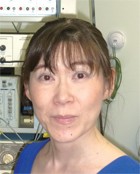
“Relation between change of the neuronal circuit and involuntary movements in neurodegenerative disorders of the basal ganglia”
Movement disorders such as Parkinson’s disease (PD), Huntington’s disease and dystonia are caused by neurodegeneration in the basal ganglia. In the basal ganglia, there are three pathways, i.e., direct, indirect and hyperdirect pathway. These pathways connect the cortex and output nuclei of the basal ganglia, and play important roles in motor control. We have recorded neuronal activities in the basal ganglia to clarify the mechanisms of motor control by the basal ganglia. It is also important to investigate pathophysiology in movement disorders to establish the therapy.
Click here for detail



































